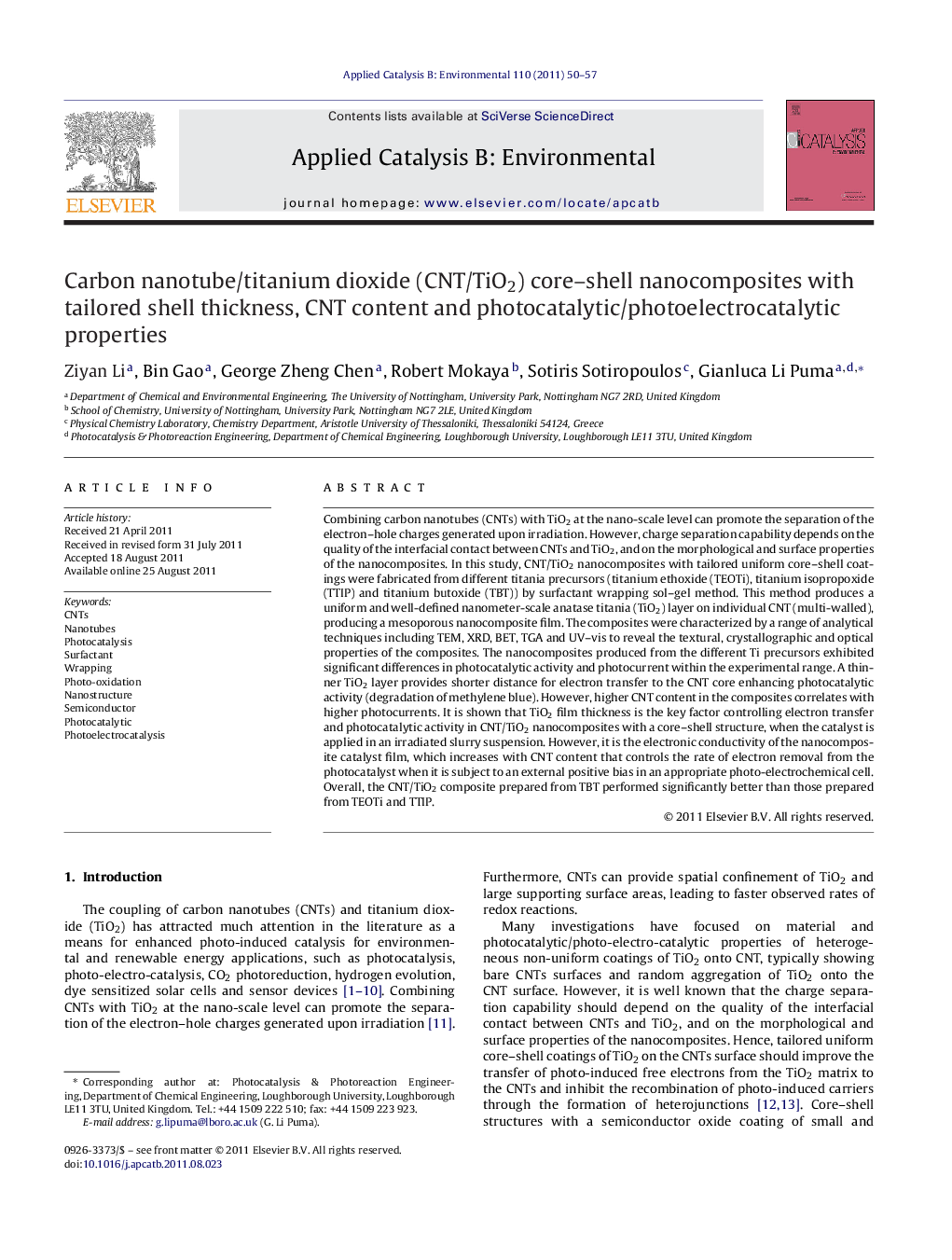| Article ID | Journal | Published Year | Pages | File Type |
|---|---|---|---|---|
| 46573 | Applied Catalysis B: Environmental | 2011 | 8 Pages |
Combining carbon nanotubes (CNTs) with TiO2 at the nano-scale level can promote the separation of the electron–hole charges generated upon irradiation. However, charge separation capability depends on the quality of the interfacial contact between CNTs and TiO2, and on the morphological and surface properties of the nanocomposites. In this study, CNT/TiO2 nanocomposites with tailored uniform core–shell coatings were fabricated from different titania precursors (titanium ethoxide (TEOTi), titanium isopropoxide (TTIP) and titanium butoxide (TBT)) by surfactant wrapping sol–gel method. This method produces a uniform and well-defined nanometer-scale anatase titania (TiO2) layer on individual CNT (multi-walled), producing a mesoporous nanocomposite film. The composites were characterized by a range of analytical techniques including TEM, XRD, BET, TGA and UV–vis to reveal the textural, crystallographic and optical properties of the composites. The nanocomposites produced from the different Ti precursors exhibited significant differences in photocatalytic activity and photocurrent within the experimental range. A thinner TiO2 layer provides shorter distance for electron transfer to the CNT core enhancing photocatalytic activity (degradation of methylene blue). However, higher CNT content in the composites correlates with higher photocurrents. It is shown that TiO2 film thickness is the key factor controlling electron transfer and photocatalytic activity in CNT/TiO2 nanocomposites with a core–shell structure, when the catalyst is applied in an irradiated slurry suspension. However, it is the electronic conductivity of the nanocomposite catalyst film, which increases with CNT content that controls the rate of electron removal from the photocatalyst when it is subject to an external positive bias in an appropriate photo-electrochemical cell. Overall, the CNT/TiO2 composite prepared from TBT performed significantly better than those prepared from TEOTi and TTIP.
Graphical abstractFigure optionsDownload full-size imageDownload as PowerPoint slideHighlights► CNT/TiO2 nanocomposites with tailored uniform core–shell coatings were fabricated. ► Different titania precursors led to differences in TiO2 thickness and CNT contents. ► TiO2 film thickness is the key factor controlling photocatalytic activity in slurries. ► Higher CNT content correlates with higher photocurrents in immobilized composites. ► The composite prepared from titanium butoxide was photocatalytically the most active.
